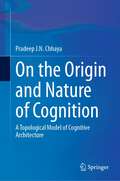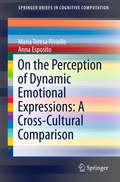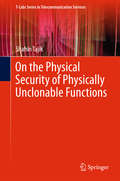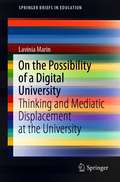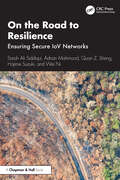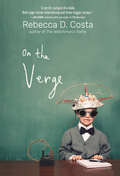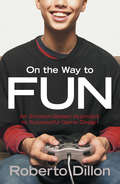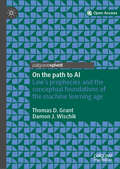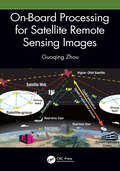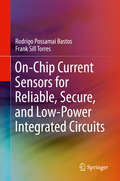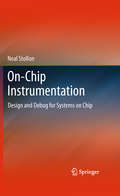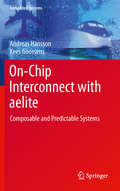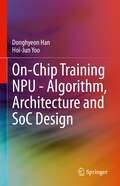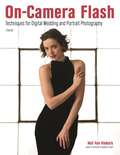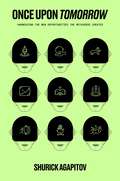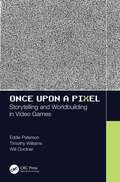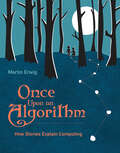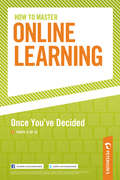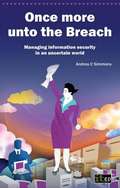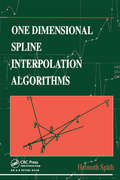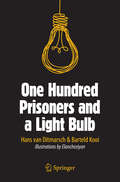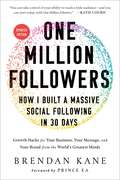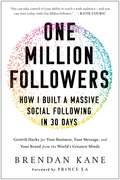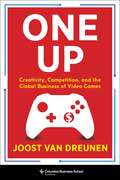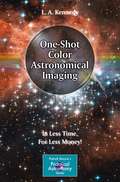- Table View
- List View
On the Origin and Nature of Cognition: A Topological Model of Cognitive Architecture
by Pradeep J.N. ChhayaThis monograph is an extension of the earlier monographs dealing with the application of the new modified involuted manifold model. This monograph has two objectives. Firstly, it seeks to integrate neuronal organization with cognitive functionalities. Secondly, it tries to formalize a structural template of cognitive functionalities. It is based on the postulate that cognitive functionalities are essentially natural phenomena and therefore amenable to formal naturalistic description. Therefore, it employs a topological model of spacetime proposed earlier to define a new framework wherein neuronal networks occupy the four-dimensional configurations of spacetime, and cognitive functionalities occupy higher dimensional configurations of spacetime. Using the Darwinian conception of natural selection, the monograph outlines a model of natural selection operating at more than one level. Thus, natural selection at the four-dimensional configurations of spacetime leads to structural agnosticism so prevalent in neuronal organization. At the same time, natural selection at the higher dimensional configurations of spacetime leads to natural selection of cognitive functionalities. Since the proposed model offers a new computational paradigm formalized in another monograph, this monograph provides a new way to formalize cognitive computations.
On the Perception of Dynamic Emotional Expressions: A Cross-cultural Comparison
by Maria Teresa Teresa Riviello Anna EspositoThis work explores the power of visual and vocal channels, in conveying emotional cues exploiting realistic, dynamic and mutually related emotional vocal and facial stimuli, and aims to report on a cross cultural comparison on how people from different Western Countries perceive emotional dynamic stimuli. The authors attempt to give an answer to the following questions evaluating the subjective perception of emotional states in the single (either visual or auditory channel) and the combined channels: - In a body-to-body interaction, the addressee exploits both the verbal and non-verbal communication modes to infer the speaker's emotional state. Is such an informational content redundant? - Is the amount of information conveyed by each communication mode the same or is it different? - How much information about the speaker's emotional state is conveyed by each mode and is there a preferential communication mode for a given emotional state? -To what extent the cultural specificity affect the decoding of the emotional information? The results are interpreted in terms of cognitive load, language expertise and stimulus dynamics. This book will be of interest to researchers and scholars in the field of Human Computer Interaction, Affective Computing, Psychology, Social Sciences .
On the Physical Security of Physically Unclonable Functions (T-Labs Series in Telecommunication Services)
by Shahin TajikThis book investigates the susceptibility of intrinsic physically unclonable function (PUF) implementations on reconfigurable hardware to optical semi-invasive attacks from the chip backside. It explores different classes of optical attacks, particularly photonic emission analysis, laser fault injection, and optical contactless probing. By applying these techniques, the book demonstrates that the secrets generated by a PUF can be predicted, manipulated or directly probed without affecting the behavior of the PUF. It subsequently discusses the cost and feasibility of launching such attacks against the very latest hardware technologies in a real scenario. The author discusses why PUFs are not tamper-evident in their current configuration, and therefore, PUFs alone cannot raise the security level of key storage. The author then reviews the potential and already implemented countermeasures, which can remedy PUFs’ security-related shortcomings and make them resistant to optical side-channel and optical fault attacks. Lastly, by making selected modifications to the functionality of an existing PUF architecture, the book presents a prototype tamper-evident sensor for detecting optical contactless probing attempts.
On the Possibility of a Digital University: Thinking and Mediatic Displacement at the University (SpringerBriefs in Education)
by Lavinia MarinThis book proposes a philosophical exploration of the educational role that media plays in university study practices, with a focus on the practices of lecturing and academic writing. Are the media employed in university study practices mere accessories, or rather constitutive of these practices? While this seems to be a purely theoretical question, its practical implications are wide and concern whether such a thing as a ‘digital university’ is possible. The 'digital university' has been, for a long time, a theoretical construct. However, in the aftermath of the Covid-19 pandemic, moving the university into the digital realm has become a necessity. The difficulties in transitioning to an online university during the 2020 pandemic showed the increased urgency of the questions explored in this book.The book describes lecturing and academic writing through the lens of a phenomenology of gestures and arrives at a description of the experience of university thinking as expanding the subject’s range of experiences about the world and about one’s modes of thinking about the world. The media configuration characteristic for university study practices is a movement of rendering inoperative one medium through another medium so that thinking can emerge, a movement called ‘mediatic displacement’. The question of the digital university becomes then a question whether mediatic displacement is possible on a digital screen. Although this is conceivable, digital technologies are still relatively new, and we are not used to playing with them in a profanatory way as the book discusses through the example of videoconferencing and MOOCs. The promise of the digital university seems to remain utopian until we figure out how to enact the techniques of mediatic displacement currently flourishing at the physical university.Both emerging and established researchers will benefit from this book since it offers an alternative way of discussing the possibility of a digital transformation of the university, starting from a phenomenology of gestures and an understanding of thinking as a collective experience of potentiality and profanation at the same time. By combining two perspectives, media-theoretical and educational-philosophical, this book show a new way of understanding what makes a university and, thus, contributes to the emerging debate on the digital university.
On the Road to Resilience: Ensuring Secure IoV Networks
by Quan Z. Sheng Wei Ni Adnan Mahmood Sarah Ali Siddiqui Hajime SuzukiThis book delves into the critical realm of trust management within the Internet of Vehicles (IOV) networks, exploring its multifaceted implications on safety and security which forms part of the intelligent transportation system domain.IoV emerges as a powerful convergence, seamlessly amalgamating the Internet of Things (IoT) and the intelligent transportation systems (ITS). This is crucial not only for safety-critical applications but is also an indispensable resource for non-safety applications and efficient traffic flows. While this paradigm holds numerous advantages, the existence of malicious entities and the potential spread of harmful information within the network not only impairs its performance but also presents a danger to both passengers and pedestrians. Exploring the complexities arising from dynamicity and malicious actors, this book focuses primarily on modern trust management models designed to pinpoint and eradicate threats. This includes tackling the challenges regarding the quantification of trust attributes, corresponding weights of these attributes, and misbehavior detection threshold definition within the dynamic and distributed IoV environment.This will serve as an essential guide for industry professionals and researchers working in the areas of automotive systems and transportation networks. Additionally, it will also be useful as a supplementary text for students enrolled in courses covering cybersecurity, communication networks, and human factors in transportation.Sarah Ali Siddiqui is a CSIRO Early Research Career (CERC) Fellow in the Cyber Security Automation and Orchestration Team, Data61, Commonwealth Scientific and Industrial Research Organisation (CSIRO), Australia. Adnan Mahmood is a Lecturer in Computing – IoT and Networking at the School of Computing, Macquarie University, Sydney, Australia.Quan Z. (Michael) Sheng is a Distinguished Professor and Head of the School of Computing, at Macquarie University, Sydney, Australia.Hajime Suzuki is a Principal Research Scientist at the Cybersecurity & Quantum Systems Group, Software and Computational Systems Research Program, Data61, Commonwealth Scientific and Industrial Research Organisation (CSIRO), Australia.Wei Ni is a Principal Scientist at the Commonwealth Scientific and Industrial Research Organisation, a Technical Expert at Standards Australia, a Conjoint Pro-fessor at the University of New South Wales, an Adjunct Professor at the University of Technology Sydney, and an Honorary Professor at Macquarie University, Sydney, Australia.
On the Verge
by Rebecca D. CostaThe author of The Watchman&’s Rattle &“has done it again. On the Verge shows how predictive technologies and science are redefining modern leadership&” (George Mitchell, former Senate Majority Leader). &“There can be no greater advantage than certainty of the future. Not in nature. Not in business. Not in governance.&” So begins Rebecca Costa&’s much-awaited exploration of foresight: &“the crowning achievement of human ambition.&” According to Costa, advances in Big Data, predictive analytics, genomics, artificial intelligence, and other breakthroughs have made it possible to pinpoint future results with mind-blowing accuracy—cracking the door to what Costa calls predaptation: the ability to adapt before the fact. Never before has the information needed to avert danger, get the jump ahead of others, or prepare for the inevitable been so clearly within grasp. Through fascinating real-life examples, Costa reveals how technology has brought nations, businesses, and individuals to the edge of clairvoyance. Yet, our ability to act on foreknowledge often falls short—causing leaders to squander the advantage of preemption. To counteract this failure, Costa illuminates 12 principles of adaptation, and predaptation, used to succeed in fast-moving environments. In the spirit of the best in popular science, On the Verge is a landmark examination of big-picture forces affecting society today. Costa&’s unique sociobiological perspective, combined with her ability to blend humor, breaking science, and insightful personal stories, distinguishes her as one of the most important thought leaders of our time. &“If you have an insatiable curiosity about the impact of innovation on our world ahead and how the future can be manipulated, you will love this book.&”—John Sculley, former CEO of Apple and President of Pepsi-Cola
On the Way to Fun: An Emotion-Based Approach to Successful Game Design
by Roberto DillonHow can video games be fun and immerse players in fantastic worlds where anything seems possible? How can they be so engaging to have become the main entertainment product for children and adults alike? In On the Way to Fun, the author proposes a possible answer to these questions by going back to the roots of gaming and showing how early games, as
On the path to AI: Law’s prophecies and the conceptual foundations of the machine learning age
by Thomas D. Grant Damon J. WischikThis open access book explores machine learning and its impact on how we make sense of the world. It does so by bringing together two ‘revolutions’ in a surprising analogy: the revolution of machine learning, which has placed computing on the path to artificial intelligence, and the revolution in thinking about the law that was spurred by Oliver Wendell Holmes Jr in the last two decades of the 19th century. Holmes reconceived law as prophecy based on experience, prefiguring the buzzwords of the machine learning age—prediction based on datasets.On the path to AI introduces readers to the key concepts of machine learning, discusses the potential applications and limitations of predictions generated by machines using data, and informs current debates amongst scholars, lawyers and policy makers on how it should be used and regulated wisely. Technologists will also find useful lessons learned from the last 120 years of legal grappling with accountability, explainability, and biased data.
On-Board Processing for Satellite Remote Sensing Images
by Guoqing ZhouOn-board image processing systems are used to maximize image data transmission efficiency for large volumes of data gathered by Earth observation satellites. This book explains the methods, mathematical models, and key technologies used for these systems. It introduces the background, basic concepts, and the architecture of on-board image processing, along with on-board detection of the image feature and matching, ground control point identification, on-board geometric correction, calibration, geographic registration, etc. • Describes algorithms and methodologies for on-board image processing with FPGA chips. • Migrates the traditional on-ground computing to on-board operation and the image processing is implemented on-board, not on-ground. • Introduces for the first time many key technologies and methods for on-board image processing. • Emphasizes the recent progress in image processing by using on-board FPGA chips. • Includes case studies from the author’s extensive research and experience on the topic. This book gives insights into emerging technologies for on-board processing and will benefit senior undergraduate and graduate students of remote sensing, information technology, computer science and engineering, electronic engineering, and geography, as well as researchers and professionals interested in satellite remote sensing image processing in academia, and governmental and commercial sectors.
On-Chip Current Sensors for Reliable, Secure, and Low-Power Integrated Circuits
by Rodrigo Possamai Bastos Frank Sill TorresThis book provides readers with insight into an alternative approach for enhancing the reliability, security, and low power features of integrated circuit designs, related to transient faults, hardware Trojans, and power consumption. The authors explain how the addition of integrated sensors enables the detection of ionizing particles and how this information can be processed at a high layer. The discussion also includes a variety of applications, such as the detection of hardware Trojans and fault attacks, and how sensors can operate to provide different body bias levels and reduce power costs. Readers can benefit from these sensors-based approaches through designs with fast response time, non-intrusive integration on gate-level and reasonable design costs.
On-Chip Instrumentation
by Neal StollonThis book provides an in-depth overview of on chip instrumentation technologies and various approaches taken in adding instrumentation to System on Chip (ASIC, ASSP, FPGA, etc.) design that are collectively becoming known as Design for Debug (DfD). On chip instruments are hardware based blocks that are added to a design for the specific purpose and improving the visibility of internal or embedded portions of the design (specific instruction flow in a processor, bus transaction in an on chip bus as examples) to improve the analysis or optimization capabilities for a SoC. DfD is the methodology and infrastructure that surrounds the instrumentation. Coverage includes specific design examples and discussion of implementations and DfD tradeoffs in a decision to design or select instrumentation or SoC that include instrumentation. Although the focus will be on hardware implementations, software and tools will be discussed in some detail.
On-Chip Interconnect with aelite
by Andreas Hansson Kees GoossensThe book provides a comprehensive description and implementation methodology for the Philips/NXP Aethereal/aelite Network-on-Chip (NoC). The presentation offers a systems perspective, starting from the system requirements and deriving and describing the resulting hardware architectures, embedded software, and accompanying design flow. Readers get an in depth view of the interconnect requirements, not centered only on performance and scalability, but also the multi-faceted, application-driven requirements, in particular composability and predictability. The book shows how these qualitative requirements are implemented in a state-of-the-art on-chip interconnect, and presents the realistic, quantitative costs.
On-Chip Training NPU - Algorithm, Architecture and SoC Design
by Hoi-Jun Yoo Donghyeon HanUnlike most available sources that focus on deep neural network (DNN) inference, this book provides readers with a single-source reference on the needs, requirements, and challenges involved with on-device, DNN training semiconductor and SoC design. The authors include coverage of the trends and history surrounding the development of on-device DNN training, as well as on-device training semiconductors and SoC design examples to facilitate understanding.
On-camera Flash: Techniques For Digital Wedding And Portrait Photography
by Neil Van NiekerkPhotographers are always looking for perfect light. Unfortunately, the quality of available light, and the situations in which photos are created, are rarely perfect. This is especially true when photographing weddings or portraits on location. So while finding beautiful existing light is every photographer’s ideal, it isn’t always possible. This is the point at which photographers tend to reach for a portable, on-camera flash. Indeed, these intense light sources can prove invaluable, but only if you know how to use them effectively. In the hands of an inexperienced photographer, on-camera flash will produce images that look flat and lifeless--images with harsh shadows, washed-out skin tones, cavernous black backgrounds, and other unappealing visual characteristics. In this book, acclaimed wedding and portrait photographer Neil van Niekerk shows you how to avoid the pitfalls photographers new to speedlights often encounter so that you can produce professional images using on-camera flash. You’l learn to use simple accessories to manipulate the quality of light from your flash and how to improve a lighting scenario by enhancing rather than overwhelming the existing light. When the available light is too low and too uneven to be combined with flash, he shows you how to override it completely with flash and, with some thought and careful application of specialized techniques, still get results that look great. On-camera flash is one of the most challenging light sources to master, but with the techniques in this book you’ll learn to use it with confidence. For wedding and environmental portrait photographers who must work in ever-changing lighting scenarios, this can mean better images and better sales.
Once Upon Tomorrow: Harnessing the New Opportunities the Metaverse Creates
by Shurick AgapitovShurick Agapitov&’s Once Upon Tomorrow unpacks the sometimes vague concept of the metaverse and shares the opportunities that are and will be available within this new world.Thirty years ago, the advent of the internet changed the world. For the first time in human history, the collected knowledge of all mankind was freely available to every man, woman, and child on the planet with the click of a few buttons. Fifteen years ago, the world changed again with the widespread availability and adoption of smartphones that put the full power of the internet in the palm of our hands whenever we want and wherever we are. As monumental as these advancements were, they were just the warmup for the change that&’s coming next. In just a few years, we won&’t think of &“going on the internet&” to look up information and find entertainment. Instead, we&’ll already be in the internet, living, working, and playing in an endless virtual world that will turn everything we think we know about the internet on its head. Welcome to the Metaverse. In Once Upon Tomorrow, visionary tech CEO Shurick Agapitov dives deep into this new age of the internet by unpacking exactly what the Metaverse is and what it will become. It&’s not about pixels and computer chips; it&’s a total paradigm shift what will revolutionize how people interact, share stories, create and implement ideas, conduct business, and literally live their lives. The Metaverse will be the biggest change any of us have ever seen. Fortunately, Shurick Agapitov is here to take you by the hand and welcome you into this wild, wonderful new universe of opportunity.
Once Upon a Pixel: Storytelling and Worldbuilding in Video Games
by Eddie Paterson Timothy Simpson-Williams Will CordnerOnce Upon a Pixel examines the increasing sophistication of storytelling and worldbuilding in modern video games. Drawing on some of gaming’s most popular titles, including Red Dead Redemption 2, The Last of Us, Horizon Zero Dawn, and the long-running Metal Gear Solid series, it is a pioneering exploration into narrative in games from the perspective of the creative writer. With interviews and insights from across the industry, it provides a complete account of how Triple-A, independent, and even virtual reality games are changing the way we tell stories. Key Features A fresh perspective on video games as a whole new form of creative writing. Interviews with a range of leading industry figures, from critics to creators. Professional analysis of modern video game script excerpts. Insights into emerging technologies and the future of interactive storytelling.
Once Upon an Algorithm: How Stories Explain Computing (The\mit Press Ser.)
by Martin ErwigHow Hansel and Gretel, Sherlock Holmes, the movie Groundhog Day, Harry Potter, and other familiar stories illustrate the concepts of computing.Picture a computer scientist, staring at a screen and clicking away frantically on a keyboard, hacking into a system, or perhaps developing an app. Now delete that picture. In Once Upon an Algorithm, Martin Erwig explains computation as something that takes place beyond electronic computers, and computer science as the study of systematic problem solving. Erwig points out that many daily activities involve problem solving. Getting up in the morning, for example: You get up, take a shower, get dressed, eat breakfast. This simple daily routine solves a recurring problem through a series of well-defined steps. In computer science, such a routine is called an algorithm.Erwig illustrates a series of concepts in computing with examples from daily life and familiar stories. Hansel and Gretel, for example, execute an algorithm to get home from the forest. The movie Groundhog Day illustrates the problem of unsolvability; Sherlock Holmes manipulates data structures when solving a crime; the magic in Harry Potter's world is understood through types and abstraction; and Indiana Jones demonstrates the complexity of searching. Along the way, Erwig also discusses representations and different ways to organize data; “intractable” problems; language, syntax, and ambiguity; control structures, loops, and the halting problem; different forms of recursion; and rules for finding errors in algorithms.This engaging book explains computation accessibly and shows its relevance to daily life. Something to think about next time we execute the algorithm of getting up in the morning.
Once You Have Decided
by Peterson'sThis eBook is Part II from Peterson's How to Master Online Learning which provides the most comprehensive information about online degree programs, online certifications, and continuing education; advice on paying for online classes, software, and textbooks; and expert strategies for online learning success.
Once more unto the Breach
by Andrea C. SimmonsAndrea C Simmons is an information governance specialist with extensive experience in the private and the public sectors. She has made significant contributions to standard developments and industry research and is currently working on a PhD in Information Assurance. For more than a decade she has been writing articles and blogs and presenting at conferences, seminars and workshops. Andrea is a member of many professional bodies and has just been awarded Senior Member status of the ISSA.
One Dimensional Spline Interpolation Algorithms
by Helmuth SpäthTogether with its compagnion volume this book presents a practical introduction to computing spline functions, the fundamental tools for fitting curves and surfaces in computer-aided design (CAD) and computer graphics.
One Hundred Prisoners and a Light Bulb
by Hans Van Ditmarsch Barteld KooiA group of 100 prisoners, all together in the prison dining area, are told that they will be all put in isolation cells and then will be interrogated one by one in a room containing a light with an on/off switch. The prisoners may communicate with one another by toggling the light switch (and that is the only way in which they can communicate). The light is initially switched off. There is no fixed order of interrogation, or interval between interrogations, and the same prisoner may be interrogated again at any stage. When interrogated, a prisoner can either do nothing, or toggle the light switch, or announce that all prisoners have been interrogated. If that announcement is true, the prisoners will (all) be set free, but if it is false, they will all be executed. While still in the dining room, and before the prisoners go to their isolation cells (forever), can the prisoners agree on a protocol that will set them free? At first glance, this riddle may seem impossible to solve: how can all of the necessary information be transmitted by the prisoners using only a single light bulb? There is indeed a solution, however, and it can be found by reasoning about knowledge. This book provides a guided tour through eleven classic logic puzzles that are engaging and challenging and often surprising in their solutions. These riddles revolve around the characters' declarations of knowledge, ignorance, and the appearance that they are contradicting themselves in some way. Each chapter focuses on one puzzle, which the authors break down in order to guide the reader toward the solution. For general readers and students with little technical knowledge of mathematics, One Hundred Prisoners and a Light Bulb will be an accessible and fun introduction to epistemic logic. Additionally, more advanced students and their teachers will find it to be a valuable reference text for introductory course work and further study.
One Million Followers, Updated Edition: How I Built a Massive Social Following in 30 Days
by Brendan KaneOver 60 billion online messages are sent on digital platforms every day, and only a select few succeed in the mad scramble for customer attention. This means that the question for anyone who wants to gain mass exposure for their transformative content, business, or brand or connect with audiences around the globe is no longer if they should use social media but how to best take advantage of the numerous different platforms. How can you make a significant impact in the digital world and stand out among all the noise? Digital strategist and "growth hacker" Brendan Kane has the answer and will show you how—in 30 days or less. A wizard of the social media sphere, Kane has built online platforms for A-listers including Taylor Swift and Rihanna. He's advised brands such as MTV, Skechers, Vice and IKEA on how to establish and grow their digital audience and engagement. Kane has spent his career discovering the best tools to turn any no-name into a top influencer simply by speaking into a camera or publishing a popular blog—and now he'll share his secrets with you. In One Million Followers, Kane will teach you how to gain an authentic, dedicated, and diverse online following from scratch; create personal, unique, and valuable content that will engage your core audience; and build a multi-media brand through platforms like Facebook, Instagram, YouTube, Snapchat, and LinkedIn. Featuring in-depth interviews with celebrities, influencers, and marketing experts, including: Chris Barton, cofounder and board director of Shazam and former head of Android business development for Google Ray Chan, CEO and cofounder of 9GAG Julius Dein, internet personality and magician with nearly 16 million Facebook followers Mike Jurkovac, Emmy Award–winner and creative director of will.i.am and the Black Eyed Peas Phil Ranta, former COO of Studio71 and VP of network at Fullscreen Eamonn Carey, managing director at Techstars London Jonathan Skogmo, founder and CEO of Jukin Media, Inc. Jon Jashni, founder of Raintree Ventures and former president and chief creative officer of Legendary Entertainment One Million Followers is the ultimate guide to building your worldwide brand and unlocking all the benefits social media has to offer. It's time to stop being a follower and start being a leader.
One Million Followers: How I Built a Massive Social following in 30 Days: Growth Hacks for Your Business, Your Message, and Your Brand from the World's Greatest Minds
by Brendan KaneDigital strategist and “growth hacker” Brendan Kane has the answer and will show you how—in 30 days or less. <P><P>A wizard of the social media sphere, Kane has built online platforms for A-listers including Taylor Swift and Rihanna. He’s advised brands such as MTV, Skechers, Vice and IKEA on how to establish and grow their digital audience and engagement.
One Up: Creativity, Competition, and the Global Business of Video Games
by Joost Van DreunenWhat explains the massive worldwide success of video games such as Fortnite, Minecraft, and Pokémon Go? Game companies and their popularity are poorly understood and often ignored from the standpoint of traditional business strategy. Yet this industry generates billions in revenue by thinking creatively about digital distribution, free-to-play content, and phenomena like e-sports and live streaming. What lessons can we draw from its major successes and failures about the future of entertainment?One Up offers a pioneering empirical analysis of innovation and strategy in the video game industry to explain how it has evolved from a fringe activity to become a mainstream form of entertainment. Joost van Dreunen, a widely recognized industry expert with over twenty years of experience, analyzes how game makers, publishers, and platform holders have tackled strategic challenges to make the video game industry what it is today. Using more than three decades of rigorously compiled industry data, he demonstrates that video game companies flourish when they bring the same level of creativity to business strategy that they bring to game design. Filled with case studies of companies such as Activision Blizzard, Apple, Electronic Arts, Epic Games, Microsoft, Nexon, Sony, Take-Two Interactive, Tencent, and Valve, this book forces us to rethink common misconceptions around the emergence of digital and mobile gaming. One Up is required reading for investors, creatives, managers, and anyone looking to learn about the major drivers of change and growth in contemporary entertainment.
One-Shot Color Astronomical Imaging
by L. A. KennedyThis book shows amateur astronomers how to use one-shot CCD cameras, and how to get the best out of equipment that exposes all three color images at once. Because this book is specifically devoted to one-shot imaging, "One-Shot Color Astronomical Imaging" begins by looking at all the basics - what equipment will be needed, how color imaging is done, and most importantly, what specific steps need to be followed after the one-shot color images are taken. What is one-shot color imaging? Typically, astronomical cooled-chip CCD cameras record only one color at a time - rather like old-fashioned black & white cameras fitted with color filters. Three images are taken in sequence - in red, blue, and green light - and these are then merged by software in a PC to form a color image. Each of the three images must be taken separately through a suitable color filter, which means that the total exposure time for every object is more than tripled. When exposure times can run into tens of minutes or even hours for each of the three colors, this can be a major drawback for the time-pressed amateur. "One-Shot Color Astronomical Imaging" describes the most cost-effective and time-efficient way for any amateur astronomer to begin to photograph the deep-sky.
